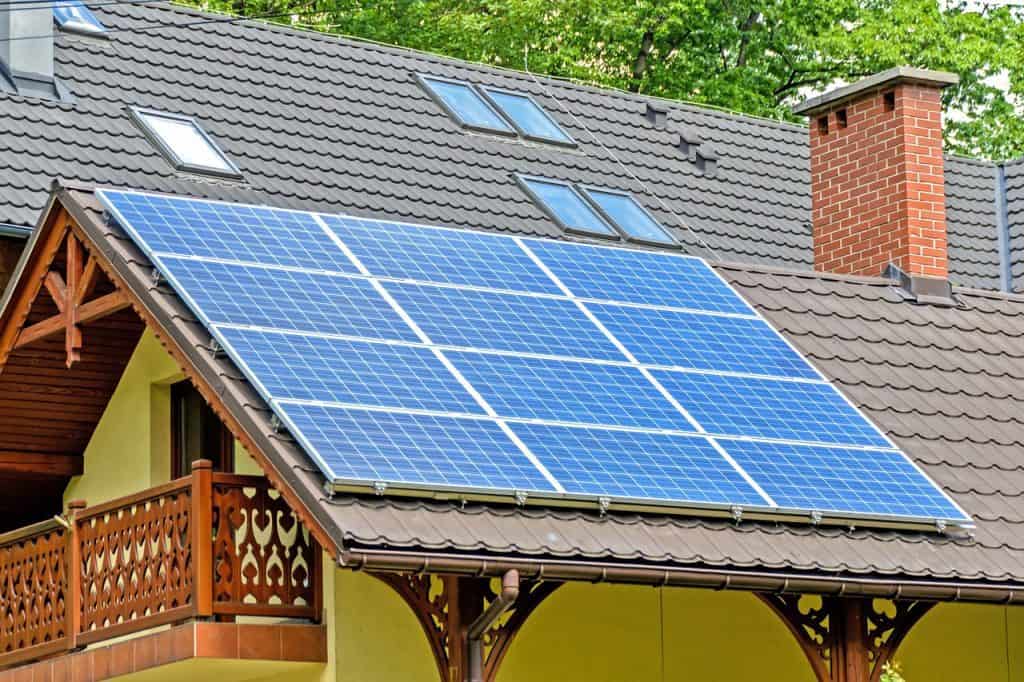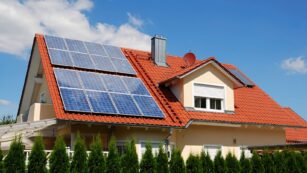Release date : 7. September 2020 Shana Yuri
From 2020, new homes in California will have to be equipped with solar panels. It is the first U.S. state to require all newly built homes to use solar energy. This rule applies to all houses of three floors or less as part of the fight against climate change.
However, this does not mean that existing or to be renovated dwellings cannot contribute to the protection of the environment.
By making efficient and effective use of energy, homes produce less carbon emissions, reducing their negative impact on the environment.
1. Affordable solar power systems

A few years ago, the prices of solar panels were exorbitant, making it expensive to install them to produce electricity.
Even in 2010, a residential photovoltaic (PV) system cost more than 50,000 dollars. Prices have fallen by more than 60 percent in recent years, with the average cost of a 6 kW system falling from just over $16 to less than $22,000.
Improved technology, increased efficiency and government incentives have made solar panels more affordable. According to a report by the National Renewable Energy Laboratory (NREL), the price per watt of solar energy has dropped by 27%.
More people can become involved in the installation of photovoltaic systems that are not only good for the environment, but also good for their wallets.
2. Free use of solar energy
The benefits of solar energy are considerable. Solar energy is a renewable energy source. In areas where the sun shines all year round, solar panels produce a good amount of energy.
Even in areas with little solar radiation due to cloud cover, it is advisable to invest in some form of solar energy.
It may not produce enough energy to meet the electricity needs of a standard house, but it can produce energy to heat water used for washing, bathing or cleaning.
Solar water heaters, for example, can cost more than standard water systems, but they offer significant savings in time. According to Energy.gov, this can reduce the energy costs of the boiler by 50%.
You also benefit from tax advantages from the government, which reduce the cost of the installation or initial investment.
In general, solar energy is an environmentally friendly form of energy that does not produce carbon dioxide emissions that are harmful to the earth’s ozone layer.
In addition, constant technological progress makes various innovations available to manufacturers and owners.
These include awnings that maximise space and preserve the aesthetics of roofs, and photovoltaic glass that can be attached to windows and outdoor furniture.
3. Hydroelectric and wind power
If you are lucky enough to live in an area where the wind is abundant, you can also use wind turbines as an energy source. In the United States 57,000 wind turbines with a total capacity of 97,960 MW are in operation.
According to the American Wind Energy Association (AWEA), it is the largest source of sustainable generation capacity in America. Wind energy generated 6.5 percent of the country’s electricity last year, enough to power 25 million homes.
Hydropower is another clean and renewable form of energy. However, not everyone will be able to live close to an energy source. But if you have a source of water in your house, you can divert the water and run it through the turbines to power your house.
4. Efficient use of conventional energy sources
The world remains dependent on traditional energy sources such as oil, gas, wood and coal. In areas where there is a lack of clean electricity generation, wood, coal and manure are mainly used for cooking and heating the house.
However, it is not viable and harmful to health because it emits toxic fumes. According to the World Health Organization (WHO), approximately 7 million people die each year from the effects of smoke inhalation and exposure to air pollution.
In the United States, most electricity is generated by coal (53 percent), natural gas (27 percent) and nuclear power plants (18 percent), according to the U.S. Energy Information Administration.
If the switch from conventional to renewable energy cannot be made overnight, non-renewable energy can be tackled. Quake Energy recommends various ways to improve energy consumption in the home.
By lowering your thermostats for cooling or heating, you can significantly reduce your electricity bill. Disconnecting equipment when not in use can also reduce energy consumption.
Simple habits such as running dishwashers and washing machines only at full load, switching to low-energy lamps and using programmable thermostats can reduce costs.
Installing blinds, curtains and roller blinds will also help you to regulate the amount of sunlight entering your home during the hot months, keeping it cooler or warmer for longer periods of time.
5. Building airtight houses to save energy
Another energy-saving option is to build airtight houses. Leaks lead to considerable heat loss or moisture damage in the home. They can also lead to poor indoor air quality, which affects the health of residents.
Air leakage can also affect the structure of the house due to unwanted moisture.
A well insulated building keeps the house warm in winter and cool in summer to save energy. For example, the windows should be triple glazed for better energy efficiency.
Doors and windows must also be properly sealed to prevent heat loss and reduce humidity.
Existing dwellings can improve air leakage by sealing cracks and openings around window and door frames. The removal of weather influences from open doors and windows improves the insulation of the house.
To prevent air leakage, you can also use a foam expansion spray and cover the ventilation holes when not in use. The chimney silencers must be tightly closed when not in use.
The transition from traditional forms to renewable energy for new housing contributes to the protection and preservation of the environment. You also save money in the long term if you invest in sustainable energy.
At the same time, existing homes can make efficient use of energy and implement energy-saving tips to improve consumption, reduce bills, combat climate change and reduce pressure on non-renewable resources.
Related Tags:
how much co2 does a gas stove emit,gas ban california,home electrification,natural gas bans,gas or electric stove for resale,induction stoves,co2 emissions from buildings 2020,commercial building carbon emissions,building sector climate change,2030 carbon emissions,components of a zero carbon building,how to reduce carbon emissions from buildings,minimising greenhouse effect in campus,environmental changes for schools,greenhouse effect at home,reduce water waste,how to mitigate climate change as a student,what would life be without energy resources,how to tackle climate change globally,how to tackle climate change in india,how many are lack access to electricity?,unsdg 7,why we should fight climate change,can technology solve climate change,what is climate crisis and clean energy,renewable energy and climate change pdf,can clean energy replace fossil fuels,climate crisis and clean energy essay,what are some downsides of renewable energy?,climate change and renewable energy articles,discuss how a carbon calculator is used.,why has dpdhl launched mission 2050,what factors affect earth's climate,carbon footprint device,residential carbon calculator,which of these is a benefit of fuel cell cars,low-carbon infrastructure examples,low carbon infrastructure fund,greenhouse infrastructure project,green building and climate change,smart building climate change,explain eco design concept,methane leaks and climate change,usgbc meaning,housing carbon emissions,buildings contribution to climate change,how would fixing and rebuilding highways help reduce emissions?,how do buildings affect climate change?,how can you help address climate change at office,how can you help address climate change at road,how to stop global warming,how can you help mitigate or lessen the effects of climate change in your community,building for climate change












